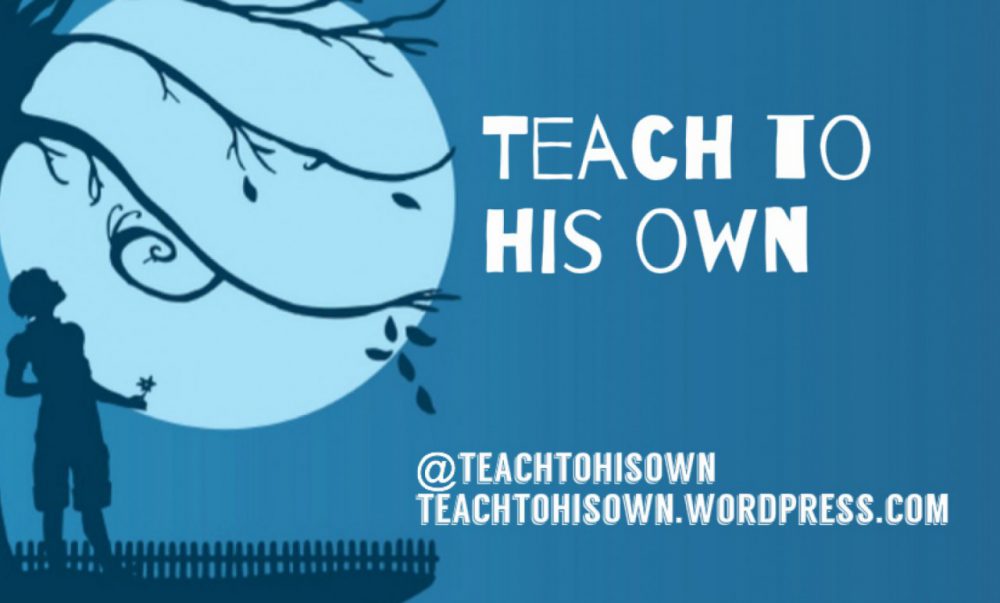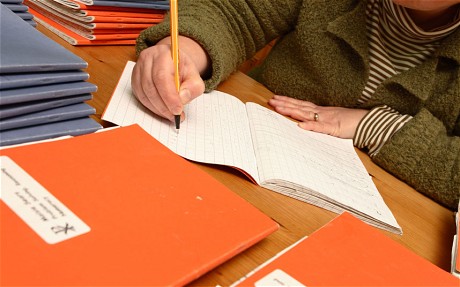Marking has been one of my professional targets pretty much since I became a teacher. That’s not to say that I haven’t got better through the years, it simply means that I still haven’t reached the stage where I am happy with my output.
Part of the problem with marking is the psychology behind it. When we all began our teacher training one of the first things we heard was: “having to mark all that work must be exhausting!”. Hence we fully expect it to be exhausting; if it isn’t then we are clearly not doing it well enough. Furthermore, we witnessed with trepidation the moment when the teacher whose classes we were now taking handed us the book box and gleefully stated, “all yours!” whilst they skipped away without a care.
I am exaggerating of course; in fact all of my mentors during my PGCE were incredibly supportive and it’s thanks to them that I came out the other side in one piece. The point I am struggling to make is that marking is always seen as an additional chore, whereas I believe for it to be successful we need to start making it work for us.
If we continue to mark the way we have always done, viewing the process as a method of overseeing that students are simply doing the work, ticking and flicking books ad nauseum, then I think we’re missing a trick. This is a repetitive and tedious misuse of our time, furthermore the students get very little benefit from it. I recall occasions when I have verged on ticking pages just because I feel I should have, without even giving the content a cursory glance – a dangerous thing indeed.
So if we are to make marking a more pleasurable and worthwhile experience what can we do to ensure this?
Firstly, plan in advance when your marking opportunities will be. If you take in a class set of books and they have spent the last three lessons doing speaking and listening activities and making notes, then what do you expect to be able to mark of value? It is far better to think, I will get my students to complete that extended activity on Thursday which I can mark by their lesson on Monday. That way you have something meaty to get to grips with and can base your marking around that one activity.
At this point I think my standpoint on ‘ticking and flicking’ needs clarifying – I say: why bother? I certainly think it is important to read through your students’ books and take on board the notes they have made. But why do they need ticking? If you think it is important to prove you’ve read a student’s notes then I would counter with: who for? Students might like to see lots of ticks, but I doubt there is any evidence that it helps them make progress. Perhaps it is for your line manager then? I imagine, however, they would sooner see well constructed regular feedback that students are engaging with than a whole book full of ticks.
Ultimately, flicking through a book and ticking pages to indicate you may have read them is simply a waste of your time as far as I am concerned – please feel free to correct me if I am wrong!
I believe that effective written feedback is produced off the back of a piece of work that you fully intended to mark, thus ensuring that it helps work towards the skills and content required to make progress. This therefore alleviates the problem of not knowing what you’re marking for. Always know what it is that you’re hoping to see from students, that way your feedback will help them achieve these expectations.
As an English teacher I often have the problem that I may have a whole class set of quite lengthy pieces of work to provide feedback on. This in itself is a difficult task to even approach; you have to set aside a certain amount of time to ensure that once you’ve begun you can get the lion’s share of it completed. I have developed a couple of strategies to deal with this.
For instance, don’t mark the whole piece. As an example, I recently asked my Year 8s to complete a short story; on average the length of each story was about 3 to 4 sides of A5. I asked students to highlight their best work from the story, no more than 15 lines, and then asked them to do the same for their weakest work. Beneath their writing they had to rationalize their choices.
When I came around to marking, I simply provided feedback on these cherry-picked sections, It allowed me to not only mark their best/worst work, but also gave me an insight into what they thought constituted good work. This empowered me to share with students that neat work isn’t necessarily your best work, and we discussed success criteria.
If I had provided feedback on all of the work students had produced, it would have taken roughly 2 to 3 hours to mark all of the students’ work. By focusing my feedback on the highlighted sections it took less than an hour and my comments were far more detailed and specific.
Ultimately, that’s what I have learned from my experiences lately – marking smarter makes your feedback more detailed, more relevant, more timely and also saves you hours upon hours of less efficient work.
No matter how you provide feedback to your students, it only becomes useful if students engage with it. Instigating a dialogue between the teacher and student via marking is incredibly powerful and should be the goal for all of us. It is powerful and effective as students know that their work is being looked at; like teachers, when students are being scrutinized they raise their game.
Furthermore, if you ask students to respond to your feedback then you know they’re taking it on board – do you really want to spend a good portion of your afternoon marking for no one to ever look at it?
My school uses a pro forma to try and help accomplish this across faculties. It is called the STAR feedback system, (it may not be original, who can tell?).
S: Success – What was good about this work.
T: Target – How this work can be made even better.
A: Ask a question – As a question for your student to answer based upon your feedback or assign them a task.
R: Response – The students respond to your question.
This has certainly helped me improve my marking and is also a useful tool for framing peer and self-assessment, especially if you tailor the resource to the task.
Like many of my posts I like to end with a brief summary of the 5 key points to take away from this:
1. Marking is planning. As Didau states here, effective marking should essentially form the planning for the next lesson, give time to reflect on what has gone before.
2. Mark smarter, not harder. Don’t trawl through their books finding things to mark, decide in advance what you’re marking and constrain your feedback to that piece of work.
3. Never tick and flick. ‘Maintenance marking’ as I have heard it called is only ‘feedback’ if you are helping students reflect – a tick does not achieve this in any way shape or form.
4. Forget about gimmicks. Avoid the ‘use this colour for this and that colour for that’ approach to marking; essentially you should be able to mark without spending an age setting yourself up to do so with the right resources and equipment.
5. Little and often. This is the crux of it all. If I have just saved you hours of marking time by saying you do not need to mark every page and you can focus feedback on specific sections within work – then really there’s no excuse for not being able to provide feedback at least a couple of times a term.
But you know what? It’s still going to be my target next year. I am not there yet despite the progress I have made this year – the thing with marking is it’s not something that will ever be ‘perfect’; but it sure can be close.
Mr P


Interesting read, I like your five points at the end there. This post of mine might be of interest to you https://mrshumanities.wordpress.com/2015/06/27/marking-feedback-and-dirt/
LikeLike
Thank you! I did reply to your comment last year but have just noticed it didn’t post, apologies for seeming rude! I have also shared your blog with a colleague – many thanks.
Mr P
LikeLike